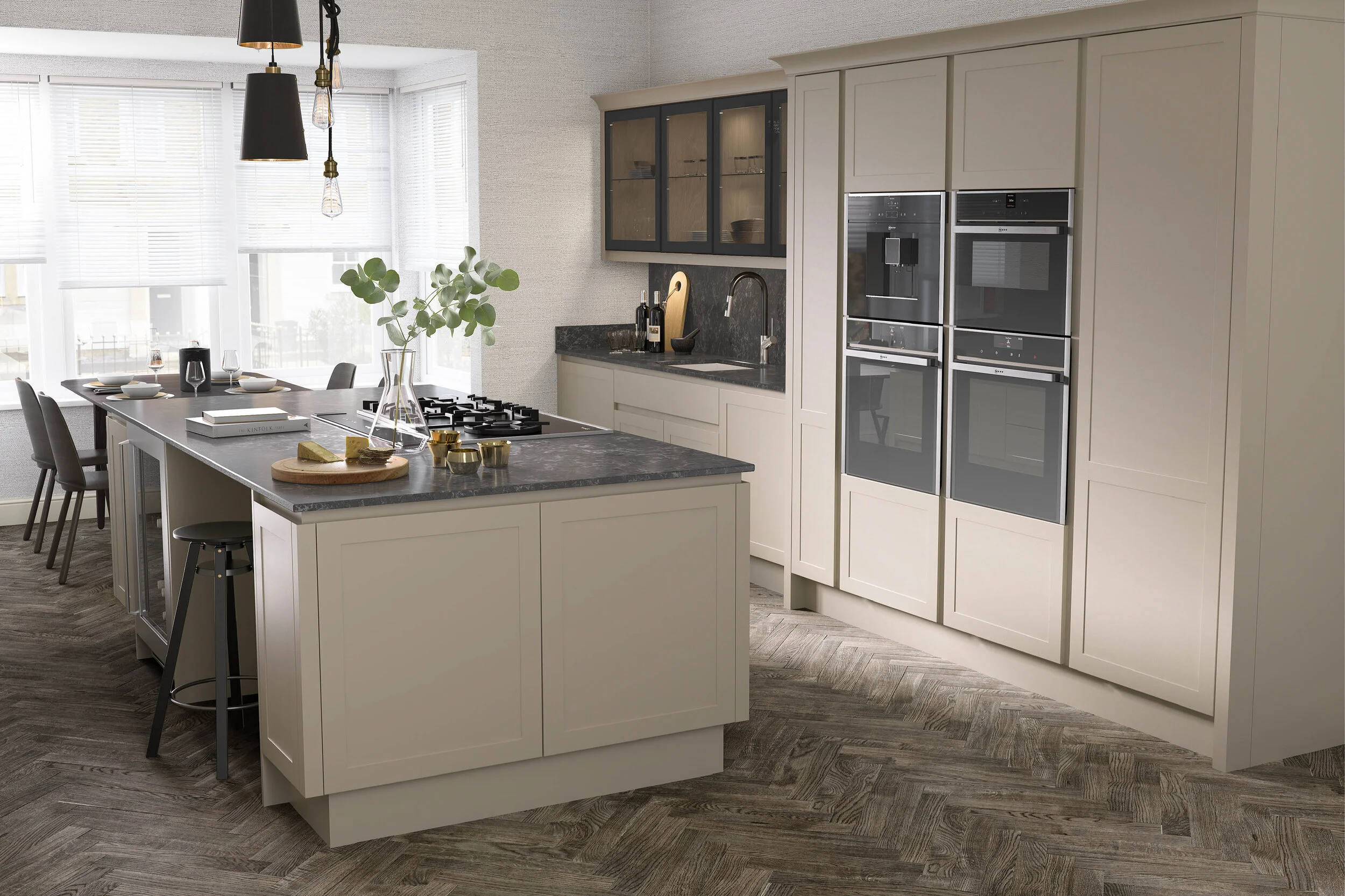How choosing the perfect colour impacts decisions around your new kitchen
When you think about how your new kitchen will look, sometimes all you can think about is the colour. There are so many ‘more important’ decisions to make about kitchen suitability and specification, but it’s only natural to get hung up on the decision around colour.
Whether you have your eye on a specific bespoke hue or are in the market for something neutral and cost-effective, this article will outline the options and their benefits and drawbacks. But first, we must take on board each type of kitchen and their respective finishes that govern the colours available for each one.
Modern
Modern kitchens are clean, smooth and reassuringly uncomplicated: perfectly suited to our contemporary world.
Lacquered finish
Lacquered kitchen doors have a smooth finish and can be matt or gloss. They are usually MDF (medium-density fibreboard) of HDF (high-density fibreboard), and most companies will have a range of stock and palette colours.
Laminated finish
Laminated kitchen doors offer a range of textured finishes along with simple plain ones. They are made from MFC (melamine faced chipboard), and the respective kitchen company sets colours and finishes.
Traditional
Traditional kitchens are perfect if you’re looking for a touch of elegance, cosy lines or a classic country kitchen.
Painted finish
Painted kitchen doors have a grained finish as they are usually made from Oak or Ash. For a smooth finish made from timber, you need to look at Limewood or Maplewood. Most companies will have a range of stock and palette colours for each.
Wrapped finish
Wrapped kitchen doors also have a grained style finish as they are built to imitate a timber door. They are made from MDF (medium-density fibreboard) and will be available in set colours only, company-dependant.
Colours
Stock
Stock colours are your best bet to get the most cost-effective option as they are pre-chosen, ready and designed to suit the kitchen at hand.
Paint-to-order palettes
These are the colours that the company regularly paints, providing a broader selection to the colours available. These aren’t stocked and, as such, are often in the next price group up.
Bespoke
Bespoke colours are for those looking to pick their perfect hue and are the most expensive colour option due to the tailored outcome. If this is what you want, ensure you find a provider that can offer a bespoke colour matching service for your most ideal finish. It’s important to remember that remedial doors later down the line will carry a matching disclaimer as they come from a different batch of paint. If you have questions about what that means for your own bespoke kitchen, we’d be happy to answer them.
Another way to achieve a bespoke colour kitchen is to have it made and delivered unpainted, then get your decorator to finish it. Be mindful they will need to remove all of the doors. The finish between hand-painted and factory-painted vary and are very much down to personal preference.
As with everything kitchen related, there are always options, and one is sure to suit you. Take some time to think about your priorities when it comes to your new kitchen colours. Are you more concerned about sticking to a budget or looking for the perfect shade? Do you care about the finished texture more than the colour itself? It’s essential to bring up colour early in conversations so you can eliminate finishes, colours and suppliers accordingly.
We hope this has helped you discover how to go about choosing your perfect kitchen colour. If you want to chat through your choice of kitchen colours, reach out.



